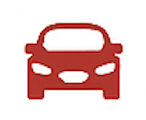Understanding the Vibrant and Evolving Car Culture in Romania
Historical Roots of Automobile Use in Romania
Romania's engagement with automobiles dates back to the early 20th century, when the first cars appeared in Bucharest and other urban centers. During the interwar period, Romanian elites and aristocracy embraced European luxury brands, contributing to a nascent but growing automotive culture. The popularity of cars was primarily limited to the wealthy due to high import costs and limited local production.
In the post-war communist era, the car became a symbol of aspiration and limited privilege. The state-owned Dacia factory, launched in 1966 under license from Renault, played a pivotal role in expanding car access. The iconic Dacia 1300, based on the Renault 12, became one of the most recognizable cars in Eastern Europe, reflecting both Romanian industrial ambitions and the influence of European engineering.
The Role of Dacia in Shaping National Identity
Dacia has long been a cornerstone of Romanian car culture. Its models were more than just transportation—they were a rite of passage and a symbol of national pride. For decades, owning a Dacia was a sign of middle-class stability, and many Romanians still recall their family's first car being a Dacia 1300 or 1310. The car's distinctive design, mechanical simplicity, and modest price made it ideal for domestic use.
After Romania transitioned to a market economy in the 1990s, Dacia underwent modernization. In 1999, French automaker Renault acquired a controlling stake, dramatically improving production standards. This revitalization culminated in the Dacia Logan, launched in 2004, which became a major success across Europe and beyond. Today, Dacia's role has expanded globally, but it remains deeply ingrained in Romanian cultural and economic identity.
Romania's Car Modification and Tuning Scene
Car modification in Romania has gained significant traction since the early 2000s, especially among younger enthusiasts. The rise of affordable imports from Western Europe provided a wide range of vehicles that were ideal for tuning. From performance upgrades to aesthetic changes, Romania's tuning community spans everything from subtle enhancements to extreme makeovers inspired by global trends.
Events such as the Tuning Fest in Cluj-Napoca and StreetMania in Bucharest highlight the creativity and passion of Romanian car modifiers. Enthusiasts often share their projects via social media and automotive forums, helping to grow a community that values both personal expression and technical innovation. These gatherings also provide a space for showcasing custom sound systems, vinyl wraps, and engine swaps, fostering a competitive yet collegial environment.
While the scene thrives, it also faces challenges from stricter traffic regulations and police scrutiny over illegal modifications. However, official racing and drifting clubs have helped bring structure to the subculture, promoting safety and professionalism within the hobby.
Secondhand Car Market and Vehicle Imports
Romania's used car market is one of the most dynamic in Europe. A significant number of Romanians purchase secondhand vehicles imported from Germany, France, and Italy, driven by the relatively lower cost and broad availability of European makes and models. Brands like Volkswagen, BMW, Opel, and Audi dominate the used vehicle segment.
This trend is influenced by economic factors and consumer preference for well-equipped vehicles at affordable prices. Romania's EU membership in 2007 made cross-border purchases much easier, increasing the volume of used car imports. As a result, the average age of cars on Romanian roads is relatively high—many vehicles are over 10 years old.
Government programs like Rabla (The Scrap Program) aim to encourage the replacement of older, more polluting vehicles with newer, more environmentally friendly models. However, the program's effectiveness has been debated, as economic constraints still push many Romanians toward affordable, older cars despite environmental concerns.
Car Enthusiast Communities and Automotive Events
Across Romania, car enthusiast clubs have formed strong local and regional networks. These communities often organize informal meetups, road trips, and charity events. Classic car clubs in cities like Sibiu, Timișoara, and Iași play a vital role in preserving Romanian automotive heritage, showcasing restored Dacias and foreign classics from the 1970s and 1980s.
Auto shows such as Salonul Auto București (SAB) attract thousands of attendees and serve as platforms for both manufacturers and tuners to debut their latest projects. Rally racing and off-road events in the Carpathian Mountains also highlight Romania's diverse automotive passions, drawing participants from neighboring countries.
Challenges in Urban Car Ownership and Infrastructure
While car ownership continues to rise in Romania, particularly in urban areas, infrastructure has struggled to keep pace. Bucharest is known for some of the worst traffic congestion in the EU, exacerbated by narrow roads, limited public parking, and inconsistent public transport alternatives. Many drivers report long commute times and frequent bottlenecks during peak hours.
In smaller cities and rural areas, road quality varies significantly. While major highways like the A1 and A2 provide modern transit corridors, many secondary roads are still in poor condition. Despite ongoing investment in infrastructure upgrades through EU funds, development has often been delayed due to bureaucratic hurdles and contractor issues.
These challenges have prompted some city governments to consider congestion charges, car-free zones, and improved cycling infrastructure. However, changing attitudes toward car dependency remains a slow process, especially in a society where car ownership is often associated with social status and independence.
